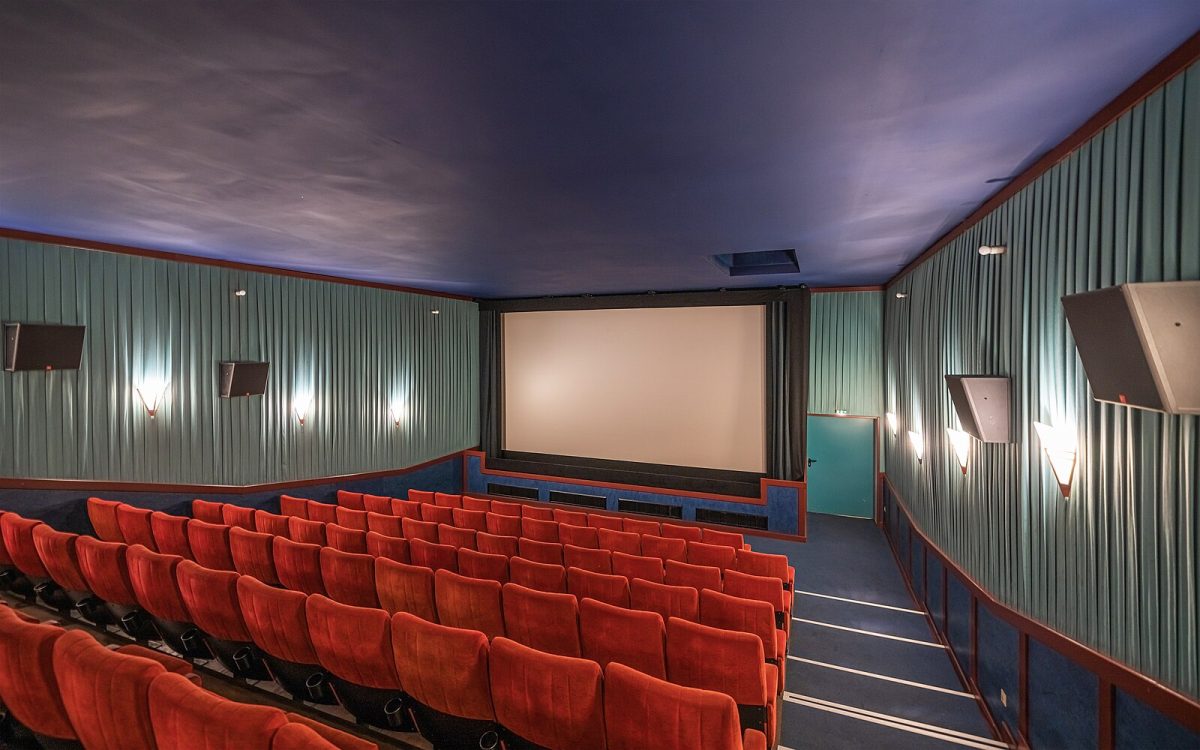Any common movie theater enthusiast knows the distinct smell of buttery popcorn and the feeling of a sticky floor as they spend an average of $14.16 per adult ticket just to experience the newest film produced. What used to be a place where teenagers, kids, and adults can squish into seats with excitement is now a desolate place that most find reasons not to visit.
The common perception shown in media throughout the late 20th century paints movie theaters as a booming social hub where people could come together to share the thrilling experience of watching an anticipated film on the same big, silver screen. Blockbusters from the 70s, 80s, and 90s racked up, leaving a mark on the world of cinema and becoming classics for years to come. Currently, the average theater fails to bring in customers as they remain stuck in that fading golden age of cinema with bright colors and even brighter concession foods.
“When we go to the movies, we often look, and the theaters are usually very empty,” Co-President of the Film Club Kiersten Miralles said. “Unless it’s a really big hit movie like ‘Fantastic Four’ or an anniversary of a movie like ‘Brokeback Mountain.’”
The reported domestic box office revenue in 2019 totaled $11.36 billion but the following years faced a significant drop after the pandemic. Even with widely-successful movies like “Wicked” and “Twisters,” that were considered to be big blockbuster hits, 2024 only earned $8.57 billion in the box office while still trying to recover pre-COVID box office revenue.
During the peak years of the pandemic, when people were still confined to their homes, many turned to streaming services to get a film fix. These quick and accessible platforms provided entertainment for hours, combatting the boredom of being locked down. Many people started and still pay a monthly fee for multiple platforms including Disney+, Netflix, or Hulu, at an average of $69 a month with up to $800 a year. These platforms weren’t just left in the dust when COVID ended, but instead became a staple in the way Americans consume entertainment.
“It’s easier to pay for a monthly subscription than it is to pay for a $12 ticket every time you go [to the movies],” Miralles said. “I know that for me, if I don’t really want to watch [a movie] as much, or if I don’t have a passion to see it as fast, I’ll just wait until it’s on a streaming service.
With increasing internet usage, especially among younger generations, many believe the film and television industry is dying out. Movie theaters are emptier than ever and AI has started to infiltrate the entertainment industry. With remakes and unwanted sequels dominating cinema and cable television losing profits, many have started to wonder where this leaves show business in today’s world.
Decades ago, Hollywood was used as a filter to bring the best out of the industry. What was once a centralized point for the entertainment and movie industry now competes with other cities as major production companies left California and ventured out to New York or Georgia.
With entertainment companies that dominate the industry placed across the country, content is left scrambled and pushed at non consumable rates. This abundance lets excellent films be lost in the sea of choices, especially if the films aren’t able to stick a well known name in the industry along with it, making independent films suffer.
For the 97th Academy Awards, only around 52% of Americans had watched the Best Picture Nominees. The critically-acclaimed, independent film “Anora” only made $36.9 million internationally in the box office but dominated the Oscars, winning five awards. In contrast, the movie “Trap”, directed by the well known M. Night Shyamalan, was criticized for its plot and overall faced negative reviews, yet it made $83.7 million worldwide, more than double the revenue of “Anora.”
“I feel like a lack of differentiation and experimentation of views is leading to a decline as well,” co-writer for the blog Couch Critics Sophia Cardona said. “People are afraid of new ideas and concepts, not wanting to spend their money on seeing it in theaters and just waiting until it streams. This has been a rapid pattern producing wise as well, seeing like rivals, spin-offs, and big names do the best money wise.”
Even as cinephiles fear this growing decline of movie theaters, and maybe even the diminishing integrity of the films being produced altogether, not all hope is lost. Thought-provoking, intelligent movies will still be made as long as there are creative people willing to take a risk, helping to ensure that film stays alive. However, as of right now, all the wrong stories are being pushed, forcing those risk takers aside.
Theaters have no control on what is being produced, but what they do have the ability is to market correctly. Instead of trying to do what is popular by advertising big names like unwanted Disney remakes, they have the capability to craft their own unique environment, publicizing innovative, distinctive films. If theaters lack any personality and are just an outlet to watch unanticipated films that would be just as interesting from a streaming app, they will lack any customers, especially those desiring originality. Film lovers can do their part as well by investing in upcoming directors and actors while supporting original films to see the industry flourish once again.




